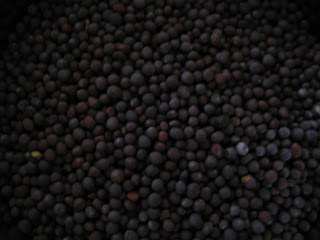Cinnamon
Source : Best Restaurant Brunswick
Cinnamon (Cinnamomum verum or Cinnamomum zeylanicum) is a small evergreen, belonging to the family Lauraceae, native to Sri Lanka and Southern India. The bark of this tree is widely used as a spice. The Cinnamon which is most commonly used in Indian homes, is actually a close relative of Cinnamomum verum known as Cassia (Cinnamomum aromaticum or Cinnamomum cassia). It is an evergreen tree native to southern China and mainland Southeast Asia.
Cinnamon has only the thin inner bark and hence is fine and crumbly. Cassia, on the other hand, has all of the layers of the bark and therefore is hard and woody. For the purpose of this essay, I will mention the uses forCinnamomum verum only.

Cinnamon has been shown to be effective in the management of Diabetesespecially the Type 2 diabetes. Cinnamon can also be used in blood pressure management. Caveat: Post-Menopausal women may not benefit by using cinnamon for their diabetes.
Numerous papers cite the use of cinnamon as anti-microbial and anti-fungal. Cinnamon is especially useful for preventing the growth of germs, which cause food spoilage. Cinnamon oil has shown the potential to be used as a fungicide in agriculture. It can also be used to prevent the browning of cut lettuce.
Cinnamon has some anti-oxidative and anti-cancer properties.Cinnamon oil may be used to treat Head louse, a common pest problem in children.
WARNING: FOR PREGNANT LADIES: Cinnamon oil was shown to have a negative effect on mouse embryos.
GENERAL: Cinnamon has been shown to have caused severe allergic reactions and inflammotory disorders in some cases.
Posted by : Indian Cuisine Brunswick
Mustard Seeds
Source : Best Restaurant Melbourne
Mustard seeds are small spherical and black, brown or yellow in color. The black seeds (Brassica nigra) are from the Middle East, the brown seeds (Brassica juncea) come from India, and the yellow mustards seeds (Brassica alba) come from the Mediterranean countries. Most Indian recipes use mustard seeds as the starting ingredient. They are added to hot oil and are ready when they start to crackle.
Mustard seeds have been found to have some anti-cancer and anti-oxidative properties.

Anti-diabetic properties of mustard seeds have been well documented.
A few papers have also been published to evaluate the cholesterol lowering effects of mustard seeds. These papers are significant because almost all Indian recipes containing coconut, a fruit high in saturated fats that elevate blood cholesterol levels, contain mustard seeds and curry leaves, both of which have been found to reduce cholesterol.
One of the most unusual properties of the mustard plant that has recently come into focus is its ability to decontaminate soil of heavy metals.
Posted by : Best Indian Restaurant in Burnswick
Curry Leaves
Source : Indian food in australia
Curry Leaves come from a tropical plant named Murraya koenigii. They are widely used in India and Sri Lanka in gravies, chutneys, and vegetable preparations, especially the ones with coconut. Curry plant is easy to grow at home and most Indian households will have one in the yard.
It is interesting to read about some of the studies performed to elucidate the hypoglycemic effect of curry leaves and also its anti-diabetic effect. These studies especially become important in the light of the fact that curry leaves are commonly used in recipes containing coconut. Also in view of this fact, it is also very important to know that studies have been done to understand the role of curry leaves in reducing blood cholesterol levels.
There has been a study done on frog hearts, which concludes that curry leaf extract can positively affect heart muscle contraction.
Some studies have been performed to show that curry leaves can kill cancerous cells and thus may help in reducing the tumor sizes.
Numerous studies have been performed which conclude positively thatcurry leaves are anti-oxidative in nature.
A study has also been performed to check the anti-trichomonal activity of curry leaves. Trichomoniasis is a sexually transmitted disease.
Posted By : Indian Restaurant in Melbourne
No comments:
Post a Comment